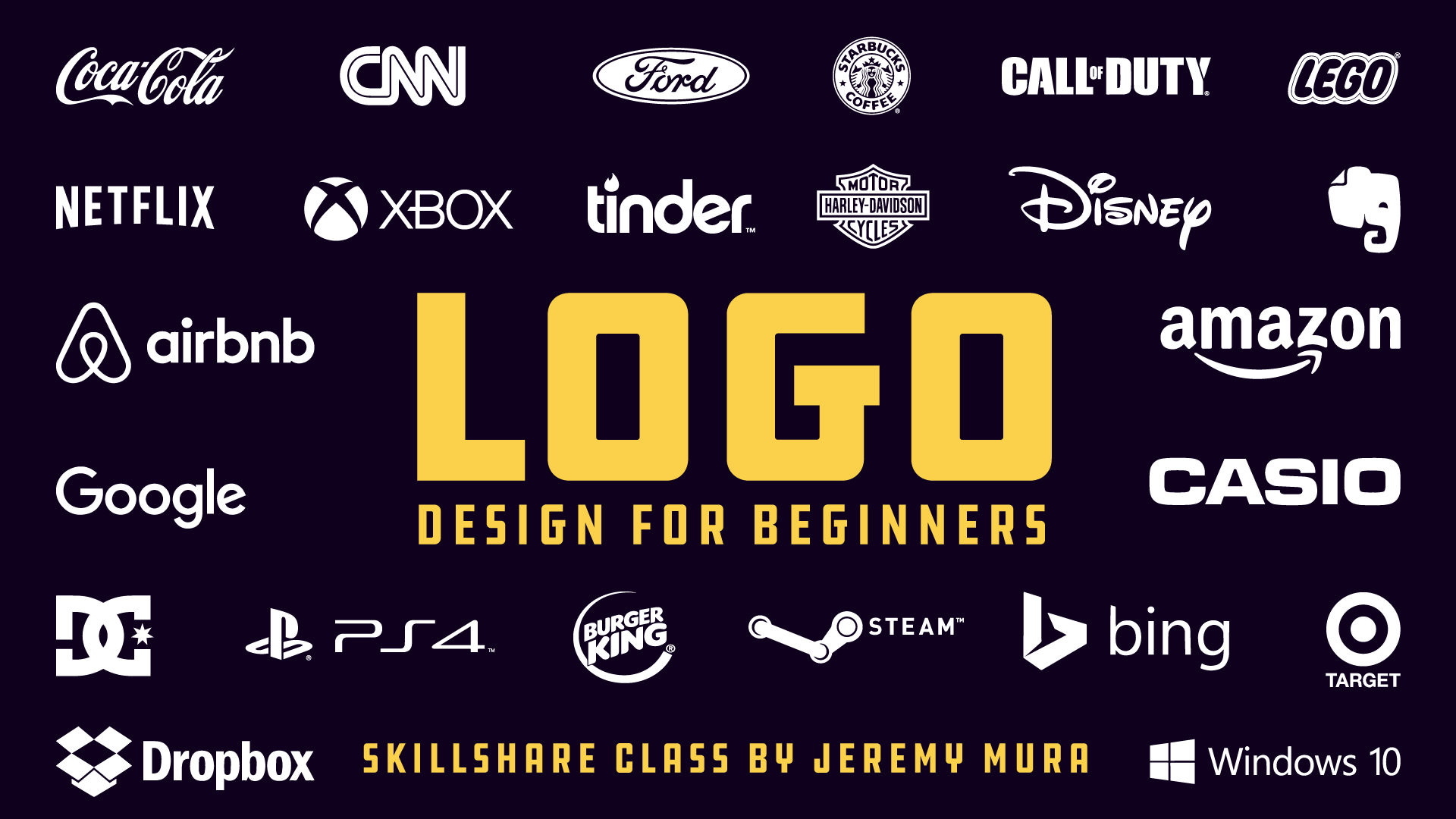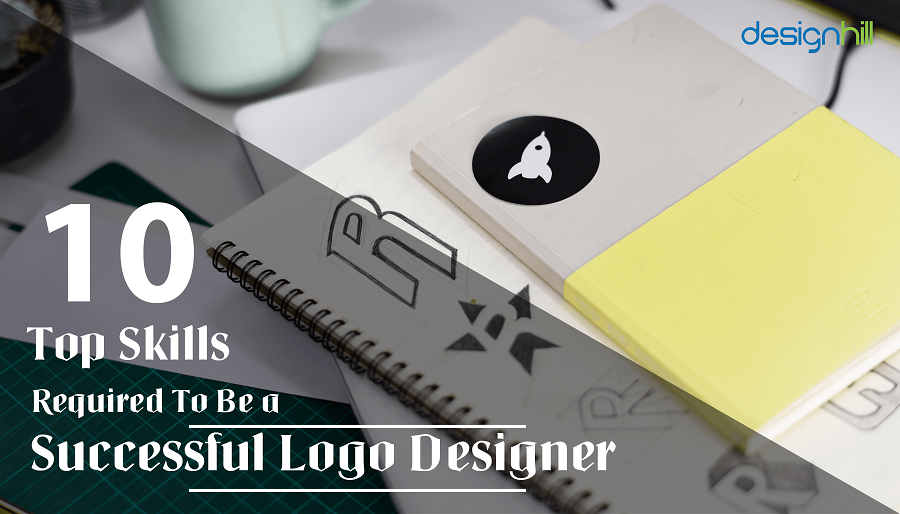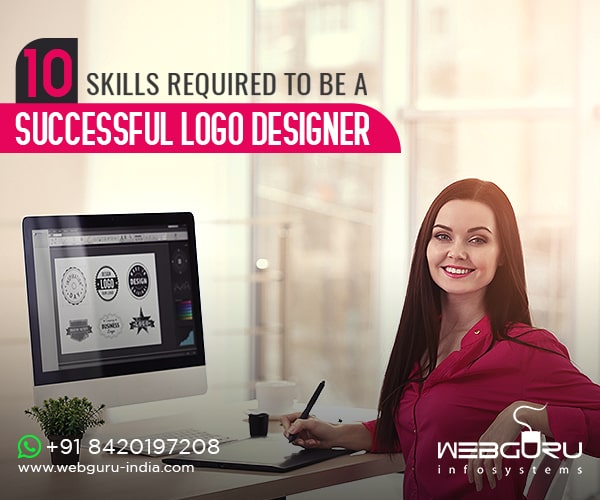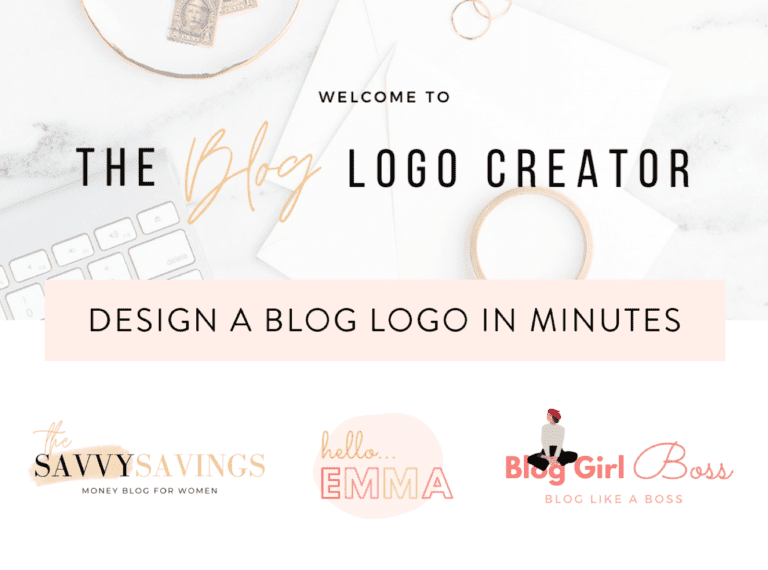To be a logo designer, you need a mix of creativity and technical skills. Logo design is not just about drawing; it involves understanding branding and visual communication.
A successful logo designer combines artistic talent with a keen eye for detail. You need to grasp design principles and be proficient in graphic design software. Strong communication skills are essential to understand client needs and convey ideas effectively. Problem-solving abilities will help you tackle design challenges and create unique logos. Whether you are considering a career shift or enhancing your design skills, knowing these key abilities can set you on the right path. For those interested in professional logo design services, check out a talented designer on Fiverr here.

Credit: www.skillshare.com
Introduction To Logo Design
Logo design is a unique blend of art and communication. It involves creating symbols or designs that represent a brand’s identity. A logo is the visual cornerstone of a brand, making the role of a logo designer crucial in the world of branding.
Understanding The Role Of A Logo Designer
A logo designer crafts visual identities for brands. They use their creativity and design skills to create logos that are memorable and impactful. Here are some key aspects of a logo designer’s role:
- Conceptualization: Developing ideas and concepts for logos.
- Design Skills: Using design software to create logos.
- Client Collaboration: Working with clients to understand their vision and needs.
- Research: Studying the market and competitors to create unique logos.
- Revisions: Making changes based on client feedback.
Importance Of Logos In Branding
Logos play a vital role in branding. They are the face of a brand and help in creating a strong brand identity. Here are some reasons why logos are important:
- Brand Recognition: Logos help in identifying and recognizing a brand quickly.
- Professionalism: A well-designed logo gives a professional look to a brand.
- Trust Building: A good logo can build trust and credibility among consumers.
- Marketing Tool: Logos are used in various marketing materials, enhancing brand visibility.
- Emotional Connection: Logos can evoke emotions and connect with the audience on a deeper level.
| Feature | Description |
|---|---|
| Identification and disabling of interfering browser extensions | Ensures a smooth user experience by removing problematic extensions. |
| Clearing of browser cache and cookies | Improves website functionality and speed. |
| Ensuring Javascript is enabled and browser is updated | Guarantees access to the latest features and security updates. |

Credit: www.designhill.com
Essential Technical Skills For Logo Designers
To succeed as a logo designer, you need a blend of creativity and technical skills. Mastering these skills will help you create memorable and impactful logos. Below, we discuss the essential technical skills every logo designer should have.
Proficiency In Design Software
Logo designers must be proficient in design software like Adobe Illustrator, CorelDRAW, and Affinity Designer. These programs offer tools to create vector graphics, which are crucial for scalable and high-quality logos.
| Software | Features |
|---|---|
| Adobe Illustrator | Vector graphics, wide range of tools, industry standard |
| CorelDRAW | Advanced vector editing, user-friendly interface |
| Affinity Designer | Cost-effective, powerful tools, fast performance |
These tools help you create precise and detailed designs. They also allow for easy adjustments and modifications, which is essential in the iterative design process.
Understanding Of Typography
Typography is a key element in logo design. You must understand how to select and pair fonts that convey the brand’s message. Good typography enhances readability and adds a professional touch to your designs.
- Choose fonts that reflect the brand’s personality.
- Ensure readability at different sizes.
- Maintain a balance between text and other design elements.
Knowledge of kerning, leading, and tracking is also important. These adjustments can significantly impact the overall look and feel of the logo.
Color Theory And Application
Colors evoke emotions and set the tone for the brand. Understanding color theory helps you choose the right color combinations for your logo designs.
Consider the following:
- Use the color wheel to create harmonious color schemes.
- Understand the psychological effects of different colors.
- Ensure color consistency across various media.
By mastering these aspects, you ensure your logos are visually appealing and effective in communicating the brand’s message.
Creative Skills Required For Logo Design
To become a successful logo designer, certain creative skills are essential. These skills help you stand out and create memorable logos. Below, we explore some of these crucial skills in detail.
Conceptual Thinking And Creativity
Conceptual thinking is the ability to generate ideas that are not immediately obvious. It involves thinking beyond the surface and coming up with unique concepts. This skill is critical for logo designers who need to create logos that are both simple and profound. Creativity, on the other hand, allows you to transform these concepts into visually appealing designs.
Here are some ways to enhance your conceptual thinking and creativity:
- Brainstorming: Regular brainstorming sessions can help you generate fresh ideas.
- Mind Mapping: Use mind maps to explore different aspects of a concept.
- Research: Study existing logos and design trends for inspiration.
Illustration And Drawing Skills
Logo designers should have strong illustration and drawing skills. These skills help in creating sketches and visual representations of ideas. Even if you’re using digital tools, the foundation of drawing enhances your design quality.
Consider these tips to improve your illustration and drawing skills:
- Practice Regularly: Dedicate time each day to sketch and draw.
- Study Art: Analyze works of renowned illustrators and artists.
- Take Classes: Enroll in drawing or illustration courses to refine your skills.
Attention To Detail
Attention to detail ensures that every element of the logo is perfect. This skill involves carefully examining each part of the design for consistency and precision. A logo with well-crafted details can significantly impact its overall effectiveness and appeal.
To improve your attention to detail:
- Review Work: Always review your designs multiple times before finalizing.
- Seek Feedback: Get opinions from peers or mentors to catch overlooked details.
- Use Tools: Utilize design software features that help in refining details.
Business And Communication Skills
Being a successful logo designer goes beyond creativity and technical skills. Strong business and communication skills are essential to thrive in this field. These skills help you understand clients’ needs, manage projects efficiently, and stay competitive in the market. Let’s explore the key areas where business and communication skills come into play.
Client Communication And Collaboration
Effective client communication is vital for any logo designer. Clear and concise communication ensures that you understand the client’s vision and requirements. This involves regular updates, seeking feedback, and addressing any concerns promptly. Collaboration with clients helps in building trust and long-term relationships.
- Listen actively to client needs and preferences.
- Ask clarifying questions to ensure understanding.
- Provide regular updates on project progress.
- Seek and incorporate client feedback.
Project Management And Time Management
As a logo designer, managing multiple projects efficiently is crucial. Strong project management skills help in organizing tasks, setting deadlines, and ensuring timely delivery. Time management is equally important to balance different projects and avoid burnout.
Effective project and time management involve:
- Setting clear project goals and timelines.
- Using tools like Trello or Asana for task management.
- Prioritizing tasks based on urgency and importance.
- Avoiding multitasking to maintain focus and quality.
Market Research And Understanding Client Needs
To create impactful logos, understanding the market and client needs is essential. Conducting thorough market research helps in identifying trends, competitor strategies, and target audience preferences. This knowledge enables you to design logos that resonate with the client’s brand and audience.
Steps to effective market research:
| Step | Description |
|---|---|
| 1. Analyze Competitors | Study competitor logos and branding strategies. |
| 2. Identify Trends | Keep up with the latest design trends in the industry. |
| 3. Understand Audience | Learn about the target audience’s preferences and behaviors. |
| 4. Client Consultation | Discuss and understand the client’s business goals and values. |
By honing these business and communication skills, you can ensure a smooth workflow, meet client expectations, and deliver exceptional logo designs.
Professional Development And Continuous Learning
To excel as a logo designer, committing to professional development and continuous learning is crucial. The design field evolves rapidly, and staying relevant requires a dedication to enhancing your skills and knowledge.
Staying Updated With Design Trends
Design trends change frequently. To stay competitive, you must keep up with the latest trends. Follow industry blogs, participate in webinars, and subscribe to design magazines. This will help you understand what is currently popular and how you can apply it to your work.
| Source | Type of Content |
|---|---|
| Design Blogs | Articles, Tutorials |
| Webinars | Live Discussions, QA |
| Design Magazines | Trends, Case Studies |
Building A Strong Portfolio
A strong portfolio is essential for showcasing your skills. Include a diverse range of projects to demonstrate your versatility. Ensure each piece highlights your ability to solve design problems and create impactful logos.
- Include personal projects
- Showcase client work
- Update regularly with new designs
Networking And Building Industry Connections
Networking is key to career growth. Attend industry events, join online design communities, and connect with other designers. Building relationships can lead to collaborations and job opportunities.
- Attend conferences and workshops
- Join design forums and groups
- Engage with other designers on social media
These strategies will help you stay informed, improve your skills, and expand your professional network. By focusing on professional development and continuous learning, you can become a successful logo designer.

Credit: www.webguru-india.com
Pros And Cons Of A Career In Logo Design
Choosing a career in logo design can be both rewarding and challenging. Understanding the pros and cons of this profession can help you decide if it’s the right path for you.
Advantages Of Being A Logo Designer
Being a logo designer has numerous advantages. Here are some of the key benefits:
- Creativity: Logo design allows you to express your creativity daily.
- Flexibility: Many logo designers work as freelancers, giving them the flexibility to set their own schedules.
- High Demand: Businesses always need logos, ensuring a steady stream of potential clients.
- Variety: You get to work on different projects, which keeps the job interesting.
- Personal Satisfaction: Seeing your designs in use by businesses can be highly rewarding.
Challenges Faced By Logo Designers
Despite its benefits, a career in logo design also comes with challenges. Here are some of the common obstacles:
- Competition: The field is competitive, making it hard to stand out.
- Client Expectations: Clients may have high or unrealistic expectations.
- Deadlines: Meeting deadlines can be stressful, especially with multiple projects.
- Income Stability: Freelance work can lead to fluctuating income levels.
- Continuous Learning: Keeping up with design trends requires ongoing education.
In summary, logo design is a career full of opportunities and challenges. Weighing the pros and cons can help you decide if it’s the right choice for you.
Recommendations For Aspiring Logo Designers
Embarking on a career in logo design requires a combination of creative and technical skills. Aspiring logo designers should focus on education, gaining practical experience, and learning how to start their careers effectively. Below are some key recommendations to help you thrive in this field.
Educational Pathways And Courses
Formal education can provide a strong foundation in design principles. Consider pursuing a degree in Graphic Design or a related field. Many universities and colleges offer specialized courses in logo design. These programs often cover:
- Typography: Understanding how to use fonts effectively.
- Color Theory: Learning the impact of color choices.
- Design Software: Mastering tools like Adobe Illustrator and Photoshop.
- Branding Concepts: Gaining insights into brand identity and strategy.
Online courses are also valuable. Websites like Coursera, Udemy, and Skillshare offer courses taught by industry professionals. These can be a flexible and affordable way to enhance your skills.
Practical Experience And Internships
Practical experience is crucial for aspiring logo designers. Internships offer hands-on opportunities to apply your skills in real-world settings. They help you understand client needs, work within constraints, and meet deadlines. Look for internships at:
- Design agencies
- Marketing firms
- In-house design teams at various companies
Freelancing is another way to gain experience. Platforms like Fiverr allow you to connect with clients worldwide. This can help you build a diverse portfolio and gain valuable feedback on your work.
Tips For Starting A Career In Logo Design
Starting your career in logo design can be challenging, but with the right approach, you can succeed. Here are some tips:
- Build a Strong Portfolio: Showcase your best work. Include a variety of styles and industries.
- Network: Connect with other designers. Attend industry events and join online communities.
- Stay Updated: Keep up with design trends. Follow design blogs and participate in workshops.
- Seek Feedback: Ask for critiques from peers and mentors. Use constructive criticism to improve.
- Promote Yourself: Use social media and a personal website to showcase your work. Highlight your unique style and strengths.
By following these recommendations, aspiring logo designers can build a successful and fulfilling career in the design industry.
Frequently Asked Questions
What Are The Essential Skills For Logo Design?
To be a logo designer, you need creativity, attention to detail, and understanding of color theory. Proficiency in design software, knowledge of typography, and communication skills are also vital.
How Important Is Creativity In Logo Design?
Creativity is crucial for logo design. It helps in crafting unique and memorable logos that effectively represent a brand’s identity and values.
Do I Need To Know Color Theory For Logo Design?
Yes, understanding color theory is essential. It helps in choosing colors that evoke the right emotions and convey the brand’s message effectively.
Is Typography Important In Logo Design?
Typography is very important in logo design. It contributes to the overall aesthetics and readability of the logo, making it more effective and appealing.
Conclusion
To excel as a logo designer, hone your creativity and technical skills. Develop a keen eye for detail and strong communication abilities. Always stay updated with design trends. Practice regularly to refine your craft. Seek feedback to improve continuously. If you need professional assistance, consider using this logo designer on Fiverr. They offer expert help with your design projects.

I have been working as an SEO Expert in Bangladesh for a long time and now providing the best SEO Service in Bangladesh. With the approach to Semantic SEO that eschews superfluity. I can get your business web page at the top of the SERP list. Using the latest digital marketing trends, I can enhance your online visibility and drive more website traffic.
